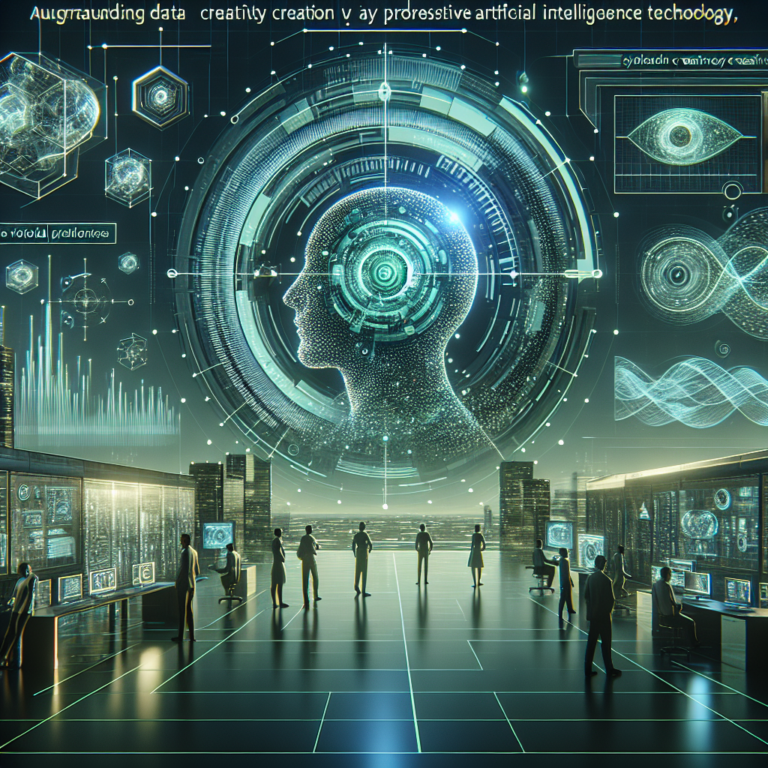In today’s technology-driven landscape, businesses continuously seek ways to harness data effectively, especially when developing advanced AI systems. The emergence of Large Language Models (LLMs) has intensified the focus on data, which serves as the foundation for accurate and reliable AI. A company’s data embodies its collective knowledge, offering vast potential for various applications, including customization, Supervised Fine-Tuning, Parameter Efficient Fine-Tuning, and even the creation of specialized Small Language Models (SLMs). However, the traditional method of generating high-quality data often proves tedious and costly, involving human annotators and the challenge of sourcing large volumes of domain-specific data.
Enter Synthetic Data Generation (SDG), a game-changing approach that allows businesses to augment their existing data sets by leveraging LLMs to create tailored, high-quality synthetic data in substantial volumes. This means turning what was once a challenge into a more streamlined and efficient process.
NVIDIA Unveils Nemotron-4 340B Family of Models
NVIDIA is proud to announce the launch of the Nemotron-4 340B model suite, specifically engineered for Synthetic Data Generation. This new family comprises a cutting-edge Base Model and a unique Instruct Model, both designed to enhance the SDG process. These models are released under a permissive license, empowering businesses and developers to utilize their outputs creatively and effectively to build innovative applications.
NVIDIA Open Model License
Accompanying the Nemotron-4 340B is the introduction of the NVIDIA Open Model License. This flexible license allows for the distribution, modification, and utilization of the models and their outputs across personal, research, and commercial projects without any attribution requirements, fostering a culture of collaboration and innovation.
Introducing the Nemotron-4 340B Reward Model
The Nemotron-4 340B Reward Model is a sophisticated, multidimensional model that takes text prompts as input and outputs a score consisting of floating-point numbers, which correlate to five key attributes. This model has undergone rigorous evaluation using a benchmark called Reward Bench, where it has showcased exceptional performance despite training on only 10,000 human-annotated response pairs.
By providing a score for responses based on human preference, this Reward Model can significantly reduce the need for extensive human annotations. Currently, it holds the top position on Reward Bench with a remarkable overall score of 92.2, especially excelling in the Chat-Hard subset, which tests a model’s capacity to handle complex queries effectively.
Understanding the HelpSteer2 Dataset
With the launch of the Nemotron-4 340B Reward, NVIDIA also introduces the HelpSteer2 Dataset. This dataset, which is licensed under CC-BY-4.0, includes ten thousand response pairs with prompts that exhibit two responses, each evaluated using a Likert-5 scale. This scale assesses five attributes:
- Helpfulness: Overall usefulness of the response to the prompt.
- Correctness: Inclusion of relevant facts without errors.
- Coherence: Clarity and consistency of the response.
- Complexity: The intellectual depth necessary to formulate the response.
- Verbosity: The level of detail in relation to what was asked in the prompt.
This dataset focuses on conversational data, capturing multi-turn dialogues in the English language, and its detailed attributes contribute to enhancing model training and evaluations.
Training the SteerLM Reward Model
The Nemotron-4 340B Reward Model was developed through the SteerLM Reward Model training process, which involves aligning the base model with the HelpSteer2 dataset. This innovative approach allows the model to deliver more comprehensive feedback on the quality of responses, as it can differentiate between verbosity and effective communication—an important factor when evaluating AI systems.
A Primer on Synthetic Data Generation (SDG)
To fully appreciate the power of the Nemotron-4 340B models, it is crucial to understand the fundamentals of Synthetic Data Generation. This process involves creating synthetic datasets that can be utilized for various model enhancements, from Supervised Fine-Tuning to Parameter Efficient Fine-Tuning, and even model alignment applications. While the use of SDG is versatile, this article will concentrate on model alignment as a primary use case for the Nemotron-4 340B models.
A robust SDG process not only focuses on generating data but also places significant emphasis on ensuring the quality of that data. In the realm of LLMs, the accuracy and reliability of the model are directly influenced by the quality of the training data. Therefore, establishing protocols for quality filtering is essential.
The Synthetic Data Generation Process
The SDG process typically involves two primary stages:
- Synthetic Response Generation: In this phase, synthetic data is produced by providing domain-specific queries to the Nemotron-4 340B Instruct Model. This model generates responses aligned with the input query format, which could utilize zero-shot, few-shot, or chain-of-thought methods for crafting the responses.
It’s worth noting that the Instruct Model can also be utilized to create initial domain-specific queries, alleviating the need for a pre-existing dataset of queries, thus enhancing flexibility in the SDG approach.
- Reward Model Verification: Utilizing the attributes of the Nemotron-4 340B Reward Model, synthetic responses can be assessed and ranked based on desired attributes. This ensures that the highest-performing responses are retained, closely mimicking human evaluation processes while adding an additional layer of quality assurance to SDG workflows.
Case Study Highlight
NVIDIA researchers have utilized the SDG approach effectively in the HelpSteer2 paper by generating 100,000 rows of conversational synthetic data, referred to as “Daring Anteater.” This dataset was instrumental in aligning the Llama 3 70B model, allowing it to match or even surpass the performance of the Llama 3 70B Instruct model on numerous standard benchmarks—despite relying on merely 1% of the human-annotated data that the latter was trained upon.
The findings from this case study underline the potential of SDG and how the tools within the Nemotron-4 340B suite can significantly enhance the data workflows of businesses today.
With the innovative SDG pipeline and the impressive features of the Nemotron-4 340B models, developers are encouraged to explore and refine different SDG methodologies, contributing to the ongoing evolution of data generation techniques tailored for AI applications. The future of AI will undoubtedly hinge on effective data utilization, and NVIDIA aims to lead the way with this powerful toolkit at its disposal.




0 Comments